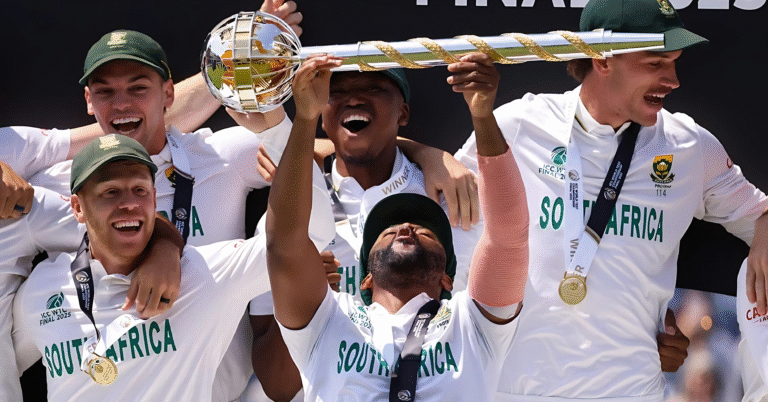
England’s Test cricket team was in freefall—until Bazball happened. But what exactly is it, who started it, and how did it turn England into the most fearless team in world cricket?
The Turning Point: From 1 Win in 17 to Crushing World Champions
In early 2022, England’s red-ball cricket was at its lowest point—just one win in 17 Test matches. Confidence was shattered, results were embarrassing, and fans were growing restless.
Then came Brendon McCullum, appointed as England’s Test coach in May 2022. Known for his aggressive mindset during his playing days, McCullum brought a new philosophy that would redefine England’s approach: Bazball.
Bazball: What Is It and Where Did It Come From?
Bazball, named after McCullum’s nickname “Baz,” isn’t just about attacking cricket—it’s a complete mindset shift. It’s about playing with intent, embracing risk, and prioritizing pressure over perfection.
In McCullum’s first assignment, England whitewashed reigning World Test Champions New Zealand 3-0. And they didn’t just win—they dominated with audacity, chasing targets of 277, 299, and 296, each in under 80 overs. That was unheard of in traditional Test cricket.
Jonny Bairstow and Joe Root: Bazball’s First Avengers
The new era’s highlight reel began with Bairstow’s blistering 136 in the second Test at Trent Bridge, chasing 299 in just 50 overs. He followed it up with a 157-ball 162 in the third Test at Headingley, helping England recover from 17/3 to post 360.
Meanwhile, Joe Root’s unbeaten 115 in a steep chase against India at Edgbaston proved Bazball wasn’t just flair—it was effective. That win, chasing 378 in 77 overs, was England’s highest-ever fourth-innings chase.
What Makes Bazball So Effective?
England’s risk-heavy style flips the script on conventional Test metrics. Control percentage—the stat that tracks how often a batter plays the ball cleanly—typically determines success. But under Bazball, England has thrived despite low control rates.
Take Zak Crawley’s 189 vs Australia: He reached his century with only 64% control, meaning over one-third of his shots were mistimed or risky. Yet, the runs kept flowing, and the pressure kept mounting on the Aussies.
Statistically, England has won 8 out of 13 Tests where their batters had a lower control percentage than the opposition. Globally, teams lose 28 out of 33 such games. England? They win. That’s Bazball.
Bazball by the Numbers
- False shots per wicket: England—1 every 10.95 false shots (2nd best in the world)
- Strike rate on false shots: 46.79 (best in the world)
- Ben Stokes’ winning percentage as captain under McCullum: 72.22%
- Chasing 250+ in 4 consecutive Tests: First team in history
- Average run rate under McCullum: 4.85 (highest in Test history)
Rawalpindi Masterclass: The Blueprint for Winning on Flat Pitches
Perhaps the ultimate Bazball Test came in Rawalpindi, Pakistan, December 2022. Faced with a pancake-flat pitch and limited daylight, England calculated they had just 150 overs to bat across two innings to win.
The result? England blasted 921 runs in 136.5 overs at 6.73 runs per over—the second-fastest scoring rate for a team posting 500+ in Test history. They bowled Pakistan out twice and won with 20 minutes of daylight left.
The Bigger Picture: A Shift in Cricketing Culture
England’s aggressive strategy doesn’t just score runs—it alters field placements, puts bowlers under pressure, and buys time for their own attack to operate. Mistakes are made, sure—but they’re made in the pursuit of scoring, not survival.
Compare this with other teams where false shots often come from defensive play—England’s batters are attacking, and their errors hurt less because they’re making them while scoring.
Recent Setbacks: Is the Bazball Bubble Bursting?
Despite the early fireworks, England’s Bazball era has encountered turbulence. They suffered a humbling series defeat in India and dropped the Pakistan Test series at home—raising questions about discipline, preparation, and strategic consistency.
With age catching up to key players and leadership roles still evolving, English cricket’s aggressive blueprint is being tested harder than ever. Critics now argue that Bazball needs more structure to stay champions, suggesting that what once felt revolutionary could soon feel outdated.

